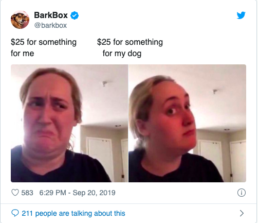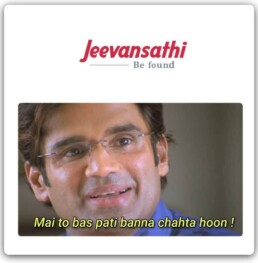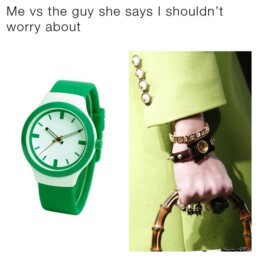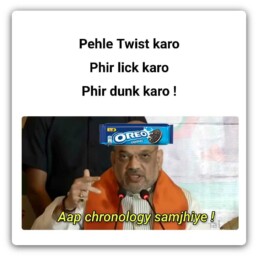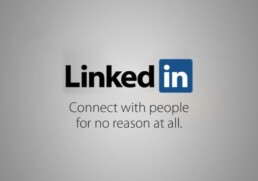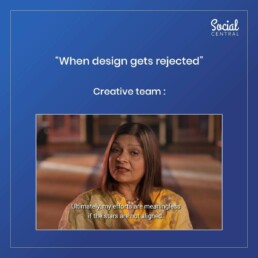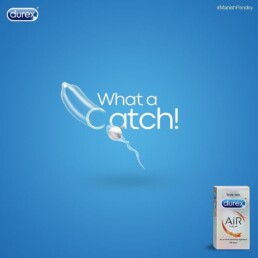*That feeling when you take a break from memes to read about the role of memes in marketing*
Congratulations! You just became a part of a meme. Although there’s no image, it’s safe to assume you got the gist of it just with the words. So, how did you become a part of this inside joke without any pretext? It shows the influence of memes.
Memes have without any doubt infiltrated our daily lives and have become a central part of the content we consume. We have given birth to a new internet language, and everyone seems to be a linguistic expert.
This influence and impact of memes have made big corporations step in and display their creativity to entice their target audience.
Since this trend seems to be gaining more popularity, brands and branding agencies have started making efforts to learn and speak the language of the internet.
Over 3 billion people use social media, and at least 60% use it for funny content. College students trade memes like kids used to trade Pokemon cards back in the day. Since memes need no introduction or explanation, let’s jump right into discussing their role in marketing. Stick around till the end and be a wiser person than before.
Where does meme fit into your marketing funnel?
Memes are primarily about the things we see around us – be it pop culture, politics, office life, school life, etc. So, when people see brands talking about relatable things, they’re more likely to gravitate towards them.
Therefore, when it comes to marketing, memes can be used to improve communication and brand engagement, build trust and a long-lasting relationship with your customers. More specifically, memes work perfectly for top-of-the-funnel marketing.
They act as a great social media fodder that tempts users to engage with a brand more than any form of content. Memes help in driving page engagement, build a community of fun-loving audiences, and improve brand awareness – that’s why they’re the best friends of social media managers, branding and marketing agencies, and content creators.
Do I need memes?
Now, we’re not asking you to go out of your way to make memes for your brand. If you think you’re target audience doesn’t deal with memes, then fair enough, don’t do it. But the main problem lies in brands taking themselves too seriously. Let’s say your product and brand are top-notch. But why should the audience care?
No one starts their day like, “oh! this brand claims to have the best sunglasses and puts out dry information about their products. I should probably follow them to get similar content”. The point is – brands must cut through the dry noise of boring and repetitive content if they want to stand out and create a connection with the customers that brings them profit. And memes are the easiest way to do that.
Many LinkedIn purists say that sharing memes or GIFs takes away the essence of LinkedIn as a social media platform for business networking. But even the stuffiest business circles can use a dash of humor in their daily lives, right?
If you’re convinced that you need to make memes a part of your marketing strategy, then read on. If not, then best of luck in your future endeavors.
Now, creating memes may seem like an easy process compared to other marketing strategies, especially when we consider the simplicity of memes and how it relates to their actual success. However, there are important details to consider before embarking on a journey to generate 25 din me double the followers using memes.
Relevance to your brand
Before you start searching for meme templates, just take a step back and look at your brand. You need to be sure that the memes you choose don’t overlap with the values and voice of your brand.
A meme must match the identity you’ve set for your brand. If it does, it will show the advantages of your services while getting closer to the audience. If a meme doesn’t naturally complement your company’s voice, it won’t generate any reaction from users and the integrity of your brand might suffer.
It’s simple, if you’re a B2C brand dealing with primarily young consumers then go nuts with your creativity. But if you’re a B2B brand, carefully figure out which trends to follow and learn to read the room, meaning know how your clients will perceive the humorous content.
For the most part, no one minds a pinch of humor if delivered correctly.
Creativity and relatability
Once you’ve figured out how to apply memes to your brand communication, the next step is to make them relatable to your audience.
The main reason why memes are loved so much is that people relate to them. If the meme content you’re putting out works only as an inside joke for people in the same industry, then you won’t reach your TG, but your colleagues, managers, and clients would probably like them.
As delightful it may sound, it’s not the right track. If a meme doesn’t reference a situation that users are familiar with, it won’t resonate with them. If it includes text or voice-over commentary, the message itself must also be simple and natural enough to reach users. If it isn’t, the resulting product will look odd and the audience’s response will be the opposite of what you expect.
Memes also provide a great opportunity to showcase your creativity. We don’t mean the design here but the way you apply a template to your brand and make it seem organically funny and relatable.
If you can’t figure out how to go about a certain trending meme, leave it and wait for the next one. You don’t have to jump the gun every time. Because there is such a thing as a bad meme. And if you’re a big brand with ample following, then a bad meme could attract an ocean of trolls. We don’t want that for you. And you definitely do not want to be a topic of trolling. This brings us to our next point.
Timing
The best way to ride the meme wave is to wait for the right trend and making the most of it – timing is everything.
Certain memes won’t work for your brand but certain ones are tailor-made for your business. You need to keep an eye on such trending memes and bank on them before they’re lost in oblivion. Yes, not all memes are timeless. Some memes have short-lived popularity. This tends to happen when they work around a particular event that’s not acknowledged by the population at large.
By the time you read this, all the shwetas, Binods, and PAWRI’s will feel ancient to you, thanks to a new template that’s storming the internet. So make sure you’re hitting the iron when it’s hot or when it’s trending!
Durex posted this after Manish Pandey’s catch. Talk about timing!
It’s better to be prepared, so make a meme template bank that you know works for your brand and unleash your creativity when a sensational topic trends.
We would also like to point out that….
Memes are not for everyone (kind of)
Memes can be divisive and offensive. If you are not sure about memes, test the waters gently with your audience. If they like your memes, they will reflect in your engagement analytics. If they don’t like them, they will most likely say so directly – this is usually not the case, because who doesn’t like memes?
Again, it all comes down to how you make use of memes for your brand. But some say that memes are not effective. These people are probably living in a bubble and like to ramble on topics like productivity, ROI, and bottom line – all the time!
The bottom line is: memes are here to stay and if you don’t embrace them, you’re missing out! Brands like Fevicol, Netflix, Zomato, Swiggy, Durex, Parle G are acing their meme game. It’s time you join them too!
*That feeling when you have to convince your boss to make memes*

